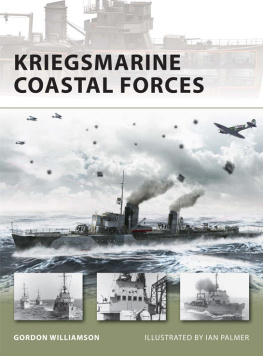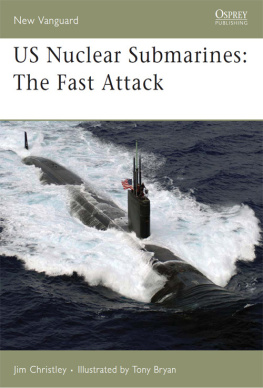Heavy Tanks of Germany in the World War II
(Extended edition)
Unique modern and old world war technology
William S. Carson
All rights reserved
William S. Carson, 2017
Fotos by:
Gina Smith
Tanya Dolski
Sam Sanderson
Bill Carson
This is an extended edition. In it you will find several new descriptions of the heavy tanks of Germany, which participated in the Second World War.
This book is devoted to the models of heavy tanks used by Wehrmacht during World War II. Here you will learn the history of the creation of heavy tanks, their tactical and technical characteristics. I also included various upgrades and experimental models of heavy tanks.
The book is intended for those who are interested in military armored vehicles.
Content:
"
Unfortunately, English is not the author's native language. All errors and inaccuracies in the book remain on his conscience.
Heavy tank VK 30.01 (H)

Official designation: VK 30.01 (H)
Alternative designation: Panzerkampfwagen VI
Started in: 1939
Year of construction of the first prototype: 1941
Stage of completion of work: remained at the level of the prototype.
On the way to the creation of the famous family of "tigers" in the prewar years, several intermediate models were created, the combat value of which raised certain doubts.
After not very successful prototypes DWI and DWII, equipped with a 75-mm gun and 50-mm frontal armor, it's time for more modern tanks. In early September 1939, Henschel, commissioned by Wa Pruef 6, began developing a heavy tank of the designation VK 30.01 (H), which also had the alternative name Panzerkampfwagen VI (7,5cm). Reservations and weapons remained unchanged, but the option of installing 105-mm cannon was considered in parallel.
Initially, it was planned to use the ready stock for the DWIII project, changing only the design of the track, but due to a significant increase in weight reaching 30 tons, the entire undercarriage had to be completely reworked. Instead of five supporting skating rinks on each side, it was decided to use seven doubles with a chess arrangement. The upper branch of the caterpillar was supported by three support rollers. The driving wheels were located in the front, the guides were at the rear. Support rollers, supporting rollers and guide wheels were supplied with rubber bandages.

The caterpillar consisted of 77 steel tracks with a width of 520 mm and a pitch of 160 mm. The length of the caterpillar support surface was 2970 mm.
The tank vessel VK 30.01 (H), with respect to tanks DW and Pz.Kpfw.IV, underwent insignificant changes. The reservation scheme remained the same: the forehead and sides are 35-50 mm, the roof is 25 mm, the bottom is 20 mm. In the front part were the transmission elements, behind which were the controls, as well as the driver's mechanic (left) and the radio operator (right). The combat compartment occupied the entire middle of the hull. There were places for the commander of the machine, the gunner and the loader.
The tower of the tank VK 30.01 (H) structurally resembled a tower from the serial Pz.Kpfw.IV, but had a stronger booking similar to the hull. In the frontal armored sheet mounted almost vertically (at an angle of 10 ), according to the project, a 75-mm 7.5 KwK37 L / 24 cannon with vertical guidance angles from -10 to + 20 and one 7.92 mm MG34 machine gun was installed. The second machine gun was in the frontal armored car body to the right of the driver and could be guided vertically in the range from -10 to + 20 , and along the horizon from -15 to + 15 . To target the gun, the TZF9 had a 2.5x magnification and a viewing angle of 24 . The machine guns were equipped with Kg ZF2 sights with 1.8 times magnification and a viewing angle of 18 .

The aft 6-cylinder Maybach HL116 engine, equipped with an air cooling system, developing power of 300 hp, was installed in the stern part of the hull. at 3000 rpm and having a volume of 11.048 liters. Transmission of the mechanical type included a manual gearbox, providing 6 speeds forward and 1 reverse.
Work on the VK 30.01 (H) tank was much faster than on its more complicated competitor VK 30.01 (P) equipped with an electric transmission. The first prototype of a heavy tank firm Henschel was ready in early 1940 and during the spring-summer successfully passed the sea trials. The tests showed that the main tactical and technical parameters of the VK 30.01 (H) are not inferior to Pz.Kpfw.IV, which was quite acceptable for the Wehrmacht, although its maximum speed was only 35 km / h, and the power reserve did not exceed 150 km. In addition, the prototype had no weapons, and instead of the tower its weight compensator was installed.
The obtained data made it possible to make an order for manufacturing a batch of 8 pre-production chassis. However, by October 1941, when three of them were ready, Wa Pruef 6 refused to continue work on the tank VK 30.01 (H). The reason was the presence of prototypes of heavy tanks VK 36.01 and VK 45.01 (P), which possessed more powerful weapons and armor protection. Although all three unarmed chassis went along with them sea trials, the future fate of the VK 30.01 (H) project was predetermined.

The finished machines were transferred to the school of tank drivers, although one of the pre-series chassis continued to be used for various experiments until the end of the war. In addition, 6 out of 12 manufactured towers, together with 75-mm short-barreled guns, were used to build the Atlantic Wall fortifications.
It is interesting that the chassis remaining on the slipways were not hurriedly handed over to scrap metal, although this idea was clearly. After the clashes with the Soviet T-34 and KV tanks, the Germans made the correct conclusion about the need for a powerful anti-tank automatic control system in the troops. The bitter experience of using the existing self-propelled guns showed that 47-mm to 75-mm caliber guns cannot always cope with the thick armor of Soviet vehicles, so two semi-finished VK 30.01 (H) chassis were decided to adapt to the installation of a 128 mm anti-tank gun 12.8cm KL / 61 manufactured by Rheinmetall. Since this artillery system was developed on the basis of an antiaircraft gun, its weight and technical characteristics were appropriate. It is for this reason that I had to extend the hull and the chassis, and also to move the fighting compartment to the stern.

TTC Heavy tank VK 30.01 (H)
BATTLE WEIGHT 32000 kg
CREW, people 5
DIMENSIONS
Length, mm 5775
Width, mm 3160 (full)
2635 (track)
Height, mm 1830 (on the body)
2095 (along the line of fire)
2575 (full)
Clearance, mm 450
ARMAMENT
one 75-mm gun KwK37 L / 24 and two 7.92-mm machine gun MG34 (only the project)
BOX 90-100 rounds and 4,350 cartridges
OPERATION EQUIPMENT TZF9 optical sight for gun and Kg ZF2 for machine guns (project only)
ARMOR
Forehead body (vertical) - 50 mm
Next page

![William Henry Lowe Watson - A Company Of Tanks [Illustrated Edition]](/uploads/posts/book/291202/thumbs/william-henry-lowe-watson-a-company-of-tanks.jpg)









